Opinion
What does ‘respect’ mean for infants and toddlers in early childhood centres?
From inviting infants to engage and waiting for their approval prior to interacting with them to interpreting children’s intentions by peacefully observing them, Toni Christie explores how respect is the most significant aspect of care and education
Published
6 years agoon
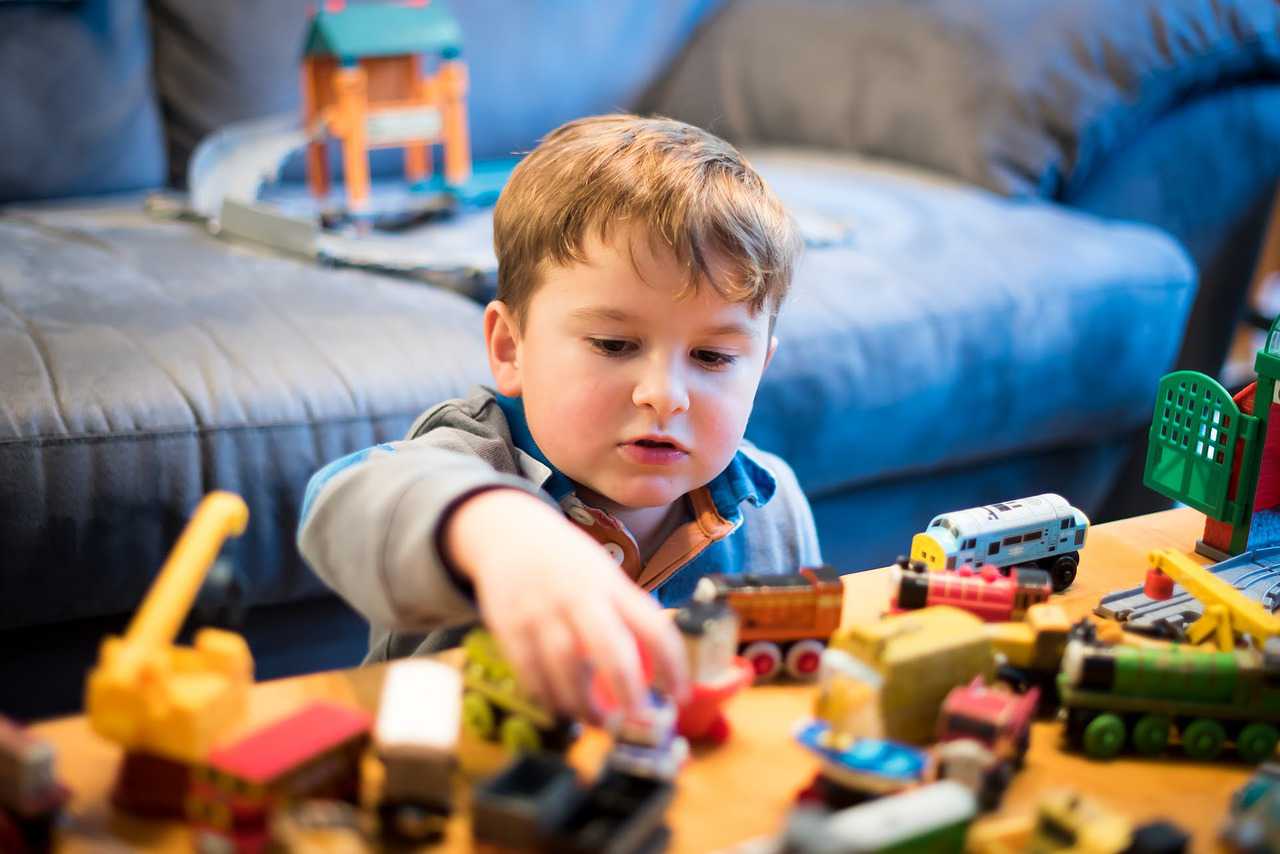
Respect is the most significant aspect of care and education with infants and toddlers in centre-based care. Defined as ‘treating with consideration’, respect was the over-arching feature underpinning the values and actions of teachers in a recent research project undertaken in a New Zealand infant and toddler centre. The overall aim of the study was to explore these practices for the benefit of other practitioners wanting to emulate a similar environment.
Introduction
This article is based on the findings from my master’s thesis completed in 2010. I undertook a qualitative case study that investigated the practices of primary care, freedom of children’s movement to enhance their physical capabilities, and respect for children’s confidence and competence.
The case study centre caters for twenty children under two years of age and is open from 7.30am until 6pm Monday to Friday. The ratio is 1:4 with a centre manager who works on the floor but outside of the ratio. The centre is divided into three distinct areas; the infant room, the toddler room and an outdoor area. There are eight infants with two teachers in the infant room and twelve toddlers with three teachers in the toddler room. My research was conducted in the infant room and the teaching staff observed and interviewed for the research were the two infant teachers and the centre manager.
Observation data was gathered by non-participant pen and paper observations and video recording. Documentation records such as ERO reports, prospectus information, children’s individual discovery projects, wall displays, newsletters and information for parents were useful in triangulating data generated by observations and teacher interviews as well as a parent focus group interview. A thematic coding of observational and interview data was used to interpret and analyse the data.
Teachers at the case study centre engaged in ways that would suggest they accept each person as an individual with rights and freedoms. Teachers invited children to engage with them, and no action would be initiated for or with a child without his or her agreement. This agreement was shown through the children’s cues and gestures, to which the teachers were all highly attuned. Teachers slowed their pace intentionally and offered children choices in their care and education. Close observation of the children by the teachers enhanced their ability to interpret individual children’s needs and wants. The teachers would then offer support for children rather than intervene unnecessarily
Ethics of care
The ethics of care discourse provided an important background to my study. The notions of empathy and respect at the heart of the ‘ethics of care’ discourse are prevalent in the feminist moral theory literature (Goldstein, 1998; Dahlberg & Moss, 2005; Noddings, 1984; Tronto, 1993). The general premise of the ethics of care debate is that “caring is not something you are, but rather something you engage in, something you do” (Goldstein, 1998, p. 247). The word ‘care’, as it pertains to teaching, is often linked to feelings, personality traits, or a person’s temperament. However, Goldstein argues, this simplistic view of care obscures the “complexity and intellectual challenge of work with young children” (p. 245).
Noddings (1984) is in agreement with Goldstein and states: “Caring involves stepping out of one’s own personal frame of reference and into the other’s” (p. 24). Noddings calls this motivational shift of putting aside your own choices, preferences, ideas, and really receiving another person as “motivational displacement” (p. 24). This shift “compels the one-caring to give primacy, even if momentarily, to the goals and needs of the cared-for” (Goldstein, 1998, p. 246). This motivational displacement coupled with peaceful observation (see later section) will lead the one caring to support the one cared for in a manner most suited to the cared for. For example, a teacher may believe that a child has no need or use for a security toy, but in reading the gestures and cues of the infant (peaceful observation) may offer the infant their security toy against their own beliefs (motivational displacement).
Teachers invite children to engage
Interactions with children at the case study centre would most often begin with some form of invitation to interact by the teacher. Usually this would take the form of a verbal invitation accompanied by outstretched open hands with palms facing up. After this initial verbal and physical invitation, the caregiver would wait for a response. The response time from the child varied. The one constant in this sequence of events was that nothing happened until the child agreed:
Interaction between Kea [teacher] and Charlotte [infant]
(All participants’ names are pseudonyms.)
“Would you like a nappy change?” she says the words and offers opened arms and hands.
When Charlotte doesn’t react Kea says “I’ll wait until you are ready.”
[Adding] “You let me know when you are ready” Charlotte thought for about 30 seconds and then bum-shuffled, waving her hands over to Kea who scooped her into her waiting open hands and arms and took her for a nappy change.
(Observation data transcribed from video)
In this exchange the child is offered the choice and therefore holds the power over when her nappy is changed. This was very typical of the interactions at the case study centre. A teacher would initiate with a verbal invitation, always accompanied by open hands held out as a gesture of invitation. Then the teacher would wait for the child’s assent which would usually be a physical sign such as tipping forwards into the open arms or putting their hands up to be carried or moving closer to be picked up.
An invitation and explanation is a simple matter of respect. This can be understood in another scenario: for example, imagine being asked, being heard, and holding the power yourself in matters affecting your physical well-being. For most adults this is accepted as a basic human right. Now imagine someone physically lifting or interfering with you in any way to which you have not consented. In the second instance, when you were not invited or consulted, the experience is one of powerlessness. You might feel more like an object rather than a human being with individual thoughts, opinions, freedoms and rights!
Unhurried time
In order to give infants unhurried time, teachers themselves have to make a commitment to slow down and be emotionally ‘present’ with infants (Kovach & Da Ros-Voseles, 2008). The following is an example of how teachers were unhurried in their interactions with infants at the case study centre:
When Tui comes back to the nursery Kea has been cuddling Max and Tui heats his bottle. She gently removes his jersey. This is a slow process and she talks to him about how she is moving his body. Tui takes Max and the bottle through to the sleep room. Tui cuddles Max as she feeds him his bottle. Ben is not yet asleep and he calls out when Max makes some sounds prior to his bottle coming. Max stops to have a look at the moving stars and Tui waits patiently until he wants his bottle again. She tries again but Max moves his head indicating he has had enough… “OK shall we put you to bed then?” She puts Max into his bed and strokes his head. She hums along with the music that is playing and Max makes little snuffling sleepy noises while she hums. He plays with her hand which is not stroking his head. Ben lets out some sounds and Max makes a small complaint. Not enough for Tui to take him out of bed. Max yawns and Tui rubs his chest gently. Max experiments with sounds and Ben joins in a little bit. Now Tui is rubbing his chest gently with one hand and his head with the other. Max’ eyes close and Tui stays with him a while longer continuing to rub his chest. When she is sure he’s asleep she gently removes her hand from his chest and fluidly secures the side of his cot and removes herself from his cot. She sits listening to Ben for a while: I think she is deciding whether she should allow him to see her as till this point though he has heard her he hasn’t seen her. He holds his hands out to Tui to indicate that he needs her. She picks him up and suggests they go and change his nappy. (Observation data transcribed from video)
The observation above is evidence of the teacher’s commitment to slowing her pace and providing valuable, uninterrupted, quality time and attention to the infant. When she does this she demonstrates her ability to empathise with the infant and understand from his perspective what the experience of going to sleep at the centre must feel like.
One parent at the focus group interview described a workshop (run by the teachers at the case study centre) where she and her husband, along with other partners present, had to feed each other:
We were role playing and one was the child and the other the adult and we had to role play the scenario where they are rushing the child. Her partner was feeding her yoghurt and talking on his cell phone at the same time and wasn’t allowing her the time to swallow. She said by the end of it she was covered in yoghurt and really angry but the exercise taught her a great lesson about following the child’s lead for when they are ready and how long they might need to swallow. Also, she was annoyed about him talking on the cell phone instead of paying attention to her.
(Janine: parent focus group interview)
Another aspect of unhurried time is the conscious decision that teachers have made to move slowly and fluidly in the infant room. They move as though they do not want to disturb anything. On several occasions I observed teachers moving slowly and softly, with small, quiet, and fluid movements. When asked about this in the teacher interviews they would explain their intention is to reinforce the idea that this is the children’s space and teachers do not want to do anything that will disturb that slow, peaceful space and pace.
This practice of taking adequate time deepens teachers’ awareness and knowledge of each child, sensed by their behaviour, body language and expressions. In the case above, the cues suggested Max might be a bit tired. Talking to him about tiredness and suggesting a sleep allowed the child to be the decision maker in the process.
My research indicated that when teachers give their time they show value for the person with whom they are engaged. When we rush an interaction we run the risk of leaving the person with whom we are interacting feeling unsatisfied and undervalued by the experience. Each child will have his or her own rhythm and pace. Respectful practice involves stepping out of personal rhythm and pace and adjusting to that of the infant. For adults generally this is going to mean slowing down a great deal in order to observe and interpret needs, invite children to engage, wait for their response and then engage in the interaction at the child’s pace.
Choices are offered
On several occasions I observed teachers offering children choices and one of the most common was to offer children a choice in the colour of the bib they wanted to wear for a mealtime. This was something that happened prior to every meal time and was part of a sequenced routine for children. Wearing a bib indicated that they would have their meal next. I noticed that the action of choosing a bib aided children’s ability to wait for a turn.
At mealtimes there were always choices for food prepared by the cook so teachers could cater to children’s individual tastes. Also choices about when children were hungry and wanted to eat were decided by the child. Teachers would offer food and if it was not accepted they would put it away to offer later.
Teachers at the case study centre felt that offering children choices was an essential element of their philosophy and practices. Below are examples of the Centre manager’s opinion on the subject of choices:
It is important to offer children choices. You know especially infants – they don’t get a lot of choice about anything really. So offering them a choice in anything that involves them gives the power over to them. They can see and feel how powerful they are in decisions which directly affect their wellbeing (Huia: teacher interview).
It is important to talk to them about what is going to happen next and giving them the opportunity to respond and be a willing participant. By giving children choices (particularly infants who are often overlooked in this area), they will soon get the idea that their opinion is valued (Huia: teacher interview).
Offering choices and inviting children to engage are both important parts of the programme provided at the case study centre. In both of these aspects the teachers consider it essential that they wait for a response. Suskind (1985, cited in Petrie & Owen, 2005, p. 144) calls this time between teacher invitation and child response “. This is another important aspect of offering choices which links to the concept of unhurried time. When a choice is offered, teachers need to allow time for a response (and this may take longer than expected in ‘adult time’), and then react according to the wishes of the child. I agree with Brumbaugh (2008) who sums up why it is important to offer children choices succinctly: “When educators trust children to make choices concerning their daily events and activities, they not only create a sense of autonomy, but also an environment of respect” (p. 175).
Peaceful observation
My findings indicate that through subtle signs and gestures in the presence of sensitive, attuned observers, even the youngest child can express his or her opinion and therefore have his or her human rights upheld (United Nations Committee on the Rights of the Child, 2003).
It is through observation that teachers learn what the child wants, needs, likes, dislikes and also what they are capable of and what their emerging capabilities are. This peaceful observation enables teachers to go further than just feeling empathy. They go beyond “what would I want if I were her?” to actually consider “what does she want?” An example was when Kea put away a child’s pacifier because she had thought she did not need it:
The child didn’t complain but looked anxious so Kea gave it back and said “Do you feel you need that?” Liv put it down beside her and continued to explore without it.
In the example above, Kea felt Liv had no need or use for the pacifier but by paying close attention to the emotions of the child who did not complain but simply looked anxious, was able to interpret the desires of the child. The ethics of care discourse (Goldstein, 1998; Noddings, 1984) would suggest that peaceful observation led Kea to give Liv the pacifier against her own better judgment (motivational displacement) because the ethics of care involve respecting another person enough to understand what they might actually want as opposed to what you think they might want.
This same ideology explains why I observed teachers over-riding the guidelines of free movement on occasion at the case study centre. Even though teachers believed strongly in the idea of natural motor progression and un-aided motor development, they would pick up a child who became upset lying on his back, or help him roll back onto his back if he was upset on his tummy, or prop a child to sit if this was a practice they were more used to from home. By paying close attention or engaging in attentive, receptive engrossment (Goldstein, 1998) the teacher displaces her own motivation and acts as the child wants, as opposed to the teacher’s own perception of what the child wants.
This ability to really see from the perspective of another requires close attention on the part of the teacher. I have labeled it peaceful observation as neither teacher nor child is making any demands of the other.
Teachers support rather than intervene
The teachers at the case study centre all felt very strongly that support rather than intervention was a mark of respect for the child. They felt that adults generally try to do too much for children and this can have a damaging effect on the child’s perception of themselves as confident and competent learners. The following were some of the comments from the teacher interviews:
Our infants are exposed to an environment that respects them for who they are, their wairua (spirit) is nurtured, honoured and celebrated. Our programme encourages our babies to feel secure and safe to make independent choices in all areas of their learning and development. I believe this teaches them a positive and healthy self-image and, ultimately and optimistically, a healthy world view (Tui: teacher interview).
I think respecting children’s confidence and competence provides them with the mana (self-esteem) that comes with working through feelings and emotions. When infants are allowed time and support to work through feelings like frustration they learn to self-regulate, collect themselves and focus. They also learn to trust and feel emotionally secure if they need that extra hand from someone else. Knowing when to lend that hand is really important. Children are capable of so much more than people often give them credit for (Tui: teacher interview).
[We believe in] giving children the freedom, and encouraging them to become confident explorers. Being there to support, but not interfere as they figure things out, for example how to use their own bodies to get to where they want to go in their own time (Huia: teacher interview).
Brownlee (2009) talks about “a baby’s sacred quest for competence” (p. 4) and discusses why trusting children and waiting and watching is far more beneficial to the child than rushing in to ‘save’ or ‘rescue’ them. When a child learns to master anything on his or her own there is a sense of power and competence that no amount of watching an adult do it for them could possibly hope to emulate.
A team approach is an important element
In the same way that it has been shown that teachers show respect for children they also demonstrate it amongst themselves. The teachers developed some sound strategies for ensuring they have a shared understanding of what it is to be respectful of each other. The team contract created by the current teaching team at the case study centre is a good example. This contract is a document the teachers developed together by brainstorming everything that each felt was important. Everything in the contract had to be agreed to by all the parties and this has given the teachers a shared understanding of respectful behaviour. Most importantly, because it was worked out together, each of the team has ownership of the ideas the contract contains.
Summary
Actions demonstrating respect include: developing nurturing relationships, predictability, empathy, considering the child as a capable and equal human being, being fully ‘present’ and undertaking peaceful observations to respond sensitively. Respect involves intentional caring or an ethic of care where the teacher is intentionally able to displace her own motivation in order to truly understand the needs and wishes of the child. When teachers invite children to engage, and wait for their agreement prior to engaging, infants are afforded control over their situation.
Teachers show respect for infants with their practice in early childhood centres by:
Recognising that infants need to develop a strong and reciprocal relationship with at least one other person in the environment and implementing a primary caregiver system to cater for that primary need.
Inviting infants to engage and waiting for their approval prior to interacting with them.
Interpreting children’s intentions by peacefully observing them and paying close attention to their body language, cues and gestures.
Recognising that infants may prefer an unhurried approach to their individual care routines, learning and development, for example, being flexible and responding according to the needs and rhythms of the infants as opposed to working by the clock.
Offering infants choices about what is to happen for them and waiting for a response to the choices that are offered.
Being available to the infant and supporting them in their learning, but resisting the urge to intervene unnecessarily in their problem-solving efforts and mastery of their own physical development.
Recognising the need for a strong philosophy and deep level of respect for children, families and the whole team at the centre.
The teachers at the case study centre have a vision about how their centre should feel and what experiences will be like for infants and toddlers who attend. The most important part of realising this vision is that every one of the teaching team shares the vision. Part of the philosophy with children is that teachers trust them to be confident and competent learners but the first level of trust necessary within the environment is amongst all of the adults who are participating.
Brownlee, P. (2009).Ego and the baby, or why your colleagues huff and puff when you trust infants.In Yeah baby! 2009: A collection of articles for teachers and parents of infants and toddlers.(pp. 4-5).Wellington, New Zealand: Childspace Early Childhood Institute.
Brumbaugh, E. (2008).DAP in ECE: Respect.Kappa Delta Pi Record. 44(4), 70- 175.
Dahlberg, G., & Moss, P. (2005).What ethics?In G. Dahlberg & P. Moss (Eds.), Ethics and politics in early childhood education (pp. 64-85).London, England:Routledge.
Goldstein, L. (1998).More than gentle smiles and warm hugs:Applying the ethic of care to early childhood education.Journal of Research in Childhood Education. 12 (2), 244-256.
Hammond, R. (2009).Respecting babies: A new look at Magda Gerber’s RIE approach. Washington, DC:Zero to Three .
Kovach, B., & Da Ros-Voseles, D. (2008) Being with babies:Understanding and responding to the infants in your care.Silver Spring, MD:Gryphon House.
Noddings, N. (1984). Caring.Berkeley, CA: University of California Press.
Petrie, S., & Owen, S. (2005). Authentic relationships in group care for infants and toddlers – Resources for infant educarers (RIE) principles into practice.Philadelphia, PA:Jessica Kingsley.
Tronto, J. (1993). Moral boundaries:A political argument for an ethic of care.New York, NY:Routledge.
United Nations Committee on the Rights of the Child. (2003, October). Concluding observations of the Committee on the Rights of the Child: New Zealand. (UN Doc. CRC/C/15/Add.216).Geneva, Italy: Author.
About the Author:

Toni Christie is the Director of Childspace Early Childhood Institute in Wellington, New Zealand. She holds a Master's degree in Education and her research interests include infants and toddlers, environment design, nature education and leadership. Toni enjoys her many roles as Director, author, editor, marriage celebrant, speaker, musician, wife and mother.

You may like
-
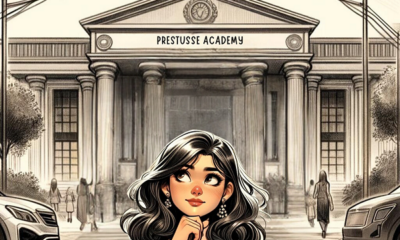

Marked by Marks: The Stereotyping of Student Potential
-


Ivy Pressure Unveiled- The Need to Look Beyond the Ivy Gates
-


Ooty Set to Host India’s Premier Liberal Arts Symposium: LASSI 2024
-
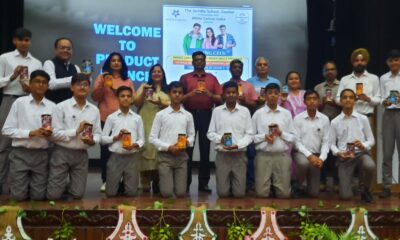

Scindia School Students Launch Start-Ups with White Canvas India’s Young CEO Program
-


Unsupervised Explorations: Rethinking Student Trips
-


Mapping Green Careers: Guiding Students Towards Sustainable Job Opportunities
-


Pricey Presents, Precocious Pressures: The Cost of Gift-Giving to Children
-
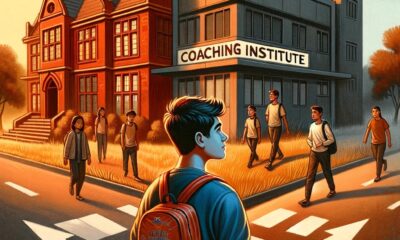

Addressing the Transition From Classrooms to Coaching: The Shifted Focus
-


Questioning the Trend of Lavish Farewells- #FarewellFiasco
-
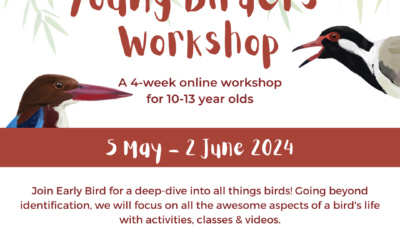

Young Birders’ Workshop Opens Registration for Children Aged 10-13 Years
Education
Unsupervised Explorations: Rethinking Student Trips
Published
2 days agoon
April 23, 2024
In a tale of youthful exuberance and unforeseen peril, six students from Class 12 embarked on a journey to Goa, a rite of passage celebrated by many as a final hurrah before stepping into adulthood. With permission from their parents, who were perhaps too trusting or caught up in their own lives, the group set out with excitement pulsing through their veins. Upon landing, they were greeted not just by the balmy Goan air but by three massive SUVs, reserved for their adventure—a promise of freedom and the thrill of the open road.
Their accommodation was a sprawling villa, costing a small fortune at 70,000 INR per night, equipped with private pools and luxuriously appointed rooms. It was a palace for kings and queens of the night, a haven for six souls intertwined in the throes of adolescence. Three rooms for three couples, the arrangements were a testament to their intentions, seeking privacy and moments of unchecked passion under the guise of a holiday.
As the days unfolded, the allure of Goa’s vibrant nightlife beckoned. The students, drawn to the magnetic pull of music and dance, found themselves in the heart of the party scene, clubbing into the early hours. It was here, amidst the revelry, that they encountered individuals with sinister motives—drug peddlers who saw not just customers but vulnerable targets in these wide-eyed teenagers.
Swept up in a desire to appear worldly and sophisticated, the group made a decision that would pivot their holiday from a dream to a nightmare. They purchased drugs, a choice made without foresight or understanding of the consequences. Their naivety became their downfall when the police, vigilant and unyielding, caught them in possession of these illegal substances.
The aftermath was swift and severe. The teenagers, underage and unprepared for the legal ramifications, were thrust into the cold reality of juvenile custody. Their parents, irrespective of their affluence, were faced with a situation no amount of money could easily resolve. Frantic and fearful, they did everything within their power to secure their children’s release, confronted with the harsh truth of their offspring’s actions.
This story, inspired by real events, serves as a stark reminder of the dangers lurking behind the facade of freedom and the allure of adulthood. It raises pressing questions about the role of guardianship and parental oversight in the lives of teenagers standing on the precipice of adulthood.
Could this grave misstep have been avoided had there been a local guardian present, a guiding light in unfamiliar territory? Would a more vigilant approach from the parents, a pause to question and understand, have rewritten the story’s conclusion? This incident forces us to confront the reality of our responsibilities towards our youth—not just to grant them freedom but to equip them with the wisdom to navigate it. As we ponder the delicate balance between trust and caution, we must ask ourselves: At what cost does freedom come, and are we doing enough to ensure that the journey into independence does not lead to a fall from grace?
To read more on such trends that need to be called out and #un-trended, head to the April issue of our magazine here.
Education
Pricey Presents, Precocious Pressures: The Cost of Gift-Giving to Children
Published
3 days agoon
April 22, 2024
In the intricate fabric of contemporary society, entwined with the threads of status and materialism, the ritual of gift-giving to young children has morphed into a showcase of wealth and social stature. This tale shines a light on the ripple effect of such extravagance through the eyes of Ayaan’s peers, young souls caught in the whirlwind of competition and comparison.
When Ayaan arrives at school with sneakers worth 80k or brandishes the latest iPhone as casually as a textbook, it’s not just a display of wealth; it becomes a benchmark, setting aflame a cycle of envy and desire among his classmates. The children, innocent in their yearnings, unknowingly step onto a treadmill of materialistic pursuit, urging their parents towards the edge of financial prudence in a bid to not fall behind.
The spectacle reaches its zenith when Ayaan, in a display of unparalleled opulence, gifts iPods as return gifts on his birthday. An act, while grand, sends shockwaves through his circle, planting seeds of expectation and entitlement in young hearts. Parents, caught between nurturing happiness and teaching value, find themselves navigating a treacherous path of societal pressure and fiscal responsibility.
As each child in Ayaan’s orbit feels compelled to mirror his lavish lifestyle, the essence of childhood camaraderie is shadowed by the looming spectre of materialism. Friendships, once untainted by the world’s complexities, now bear the weight of economic disparity. The playground becomes a silent witness to conversations not of games and dreams, but of gadgets and brands, a testament to a culture veering away from the innocence of youth.
The impact extends beyond the tangible, chipping away at the pillars of equality and mutual respect. As peers vie to outdo each other in a race fuelled by parental indulgence, the divide widens not just in their possessions but in their perceptions of self-worth and success. The classroom, a microcosm of society, reflects a disturbing trend of measuring one’s value through the lens of ownership and extravagance.
This narrative, while centred on Ayaan and his affluent displays, casts a spotlight on the broader societal implications of such gift-giving practices. It prompts a critical examination of the values we impart to our children and the world we aspire to create for them. As we navigate this maze of materialism and the stories of Ayaan and his peers unfold, they serve as a mirror to our collective conscience, urging us to reconsider the legacy we wish to leave behind. The question that beckons us to reflect is profound: Are we raising a generation that values possessions over people, status over substance?
To read more on such trends that need to be called out and #un-trended, head to the April issue of our magazine here.
Education
Addressing the Transition From Classrooms to Coaching: The Shifted Focus
Published
6 days agoon
April 19, 2024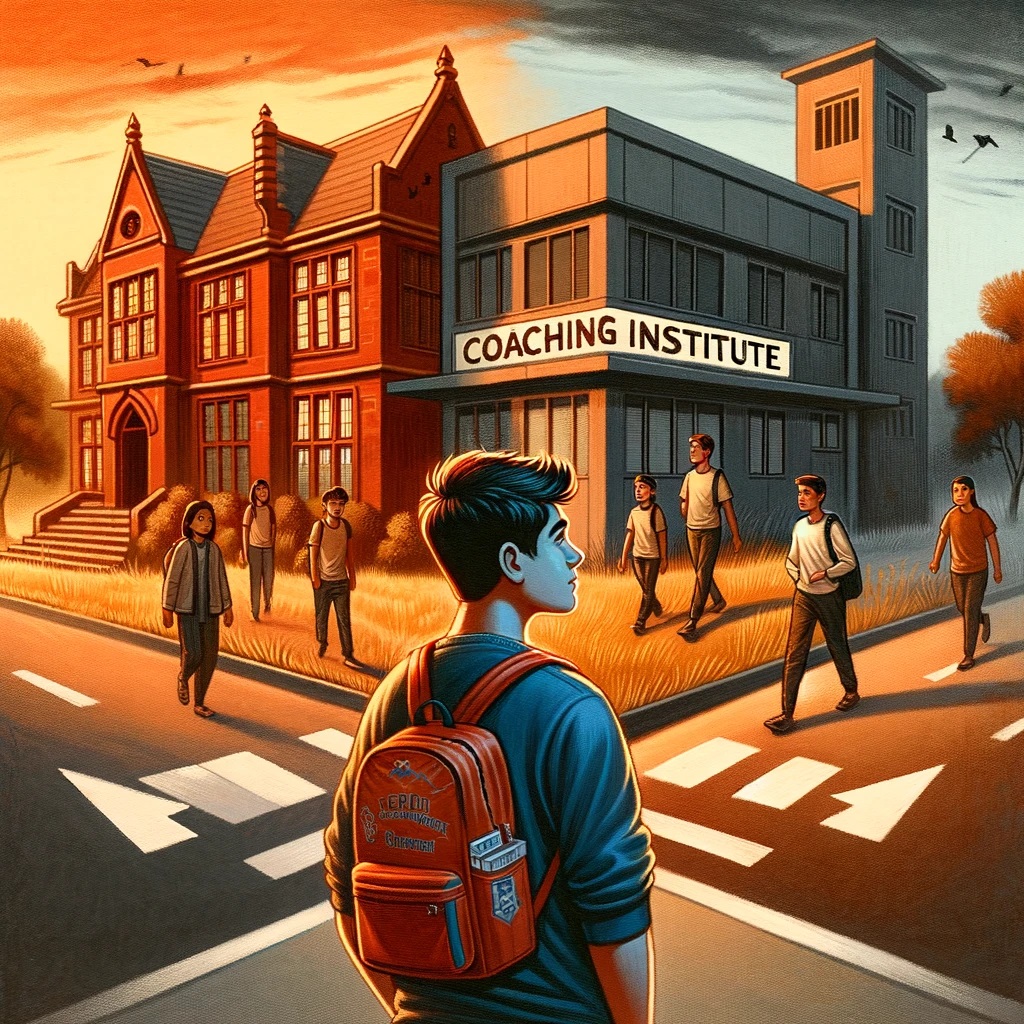
In the bustling academic corridors of Woody High, nestled amidst the verdant suburbs of a thriving city, the story of Vikram, a bright and ambitious student, begins to unfold. Vikram, like many of his peers, found himself at a crossroads as he stepped into the crucial years of 11th standard, caught between the traditional path of school education and the burgeoning trend of dummy admissions.Classrooms to Coaching: The Shifted Focus
The lure of coaching centres, promising a direct route to success in competitive exams, became increasingly irresistible. Vikram watched as one by one, his classmates traded the familiar setting of classrooms for the rigorous regimen of coaching institutes. The promise was simple: a focused preparation tailor-made for cracking entrance exams, seemingly a pragmatic choice in an increasingly competitive world.
However, this exodus from school to coaching centres revealed a deeper malaise within the education system. Schools, once vibrant communities of learning and growth, had slowly morphed into factories churning out board exam results. The holistic development of students, their readiness for the world beyond the gates of Woody High, seemed to have taken a backseat to the singular pursuit of academic scores.
Vikram’s decision to join the coaching bandwagon was met with a mix of hope and apprehension. The initial months were a blur of new concepts, relentless practice sessions, and the constant pressure to outperform. Yet, as the novelty wore off, Vikram found himself yearning for the missed debates in history class, the group projects in science, and the sense of belonging that came with being part of the school community.
The turning point came when Vikram, amidst his packed coaching schedule, volunteered for a community project. The experience was eye-opening, highlighting the gap between the rote learning at coaching centres and the practical knowledge and soft skills required in the real world. It dawned on Vikram that education was not just about clearing exams but about building a foundation for life.
As Woody High grappled with the dwindling numbers of students in its classrooms, it became evident that a change was needed. Schools had to evolve beyond their board-result orientation, integrating curriculum with real-world applications, fostering critical thinking, and preparing students for life’s myriad challenges.
The story, based on real incidents, raises the question that looms large, as we reflect on the narrative of #ClassroomOrCoaching: How can schools reclaim their role as sanctuaries of holistic education, ensuring they remain relevant and valuable in the lives of students like Vikram, not just as conduits to board results but as launchpads for their futures?
In a world where the race to the top often overlooks the essence of learning, can we afford to let coaching centres replace the rich, multifaceted experience of school education?
To read more on such trends that need to be called out and #un-trended, head to the April issue of our magazine here.
Education
Questioning the Trend of Lavish Farewells- #FarewellFiasco
Published
7 days agoon
April 18, 2024
Imagine your child is attending their Year 12 farewell. It is a night they have been looking forward to, marking the end of their school journey and the start of something new. The atmosphere is charged with excitement, laughter, and the bittersweet feeling of saying goodbye. As the evening wraps up, the buzz does not fade; it shifts to the streets. A group of friends, adrenaline still running high from the night’s celebrations, decide to extend the farewell with a car rally. Among them is Aarav, driving his family’s SUV, a vehicle too powerful for his inexperienced hands.
The city sleeps as the convoy of cars snakes its way through the deserted streets, the hum of engines breaking the night’s silence. Aarav, feeling the thrill of the chase, pushes the pedal down, the speedometer needle climbing higher and higher. His friends, in the car beside him, cheer him on, the competition heating up as they approach the ring road. It is a wide stretch, seemingly perfect for their race, away from the prying eyes of the night.
But in a heartbeat, the night turns tragic. Aarav loses control. The SUV, now a projectile, careers off the road, skidding and tumbling for what seems like an eternity. The aftermath is a scene of devastation. The vehicle, unrecognisable, lies in ruins, and silence once again claims the night, now heavy with the weight of consequences.
By the time the first light of dawn touches the sky, the police are at the scene, piecing together the events. The accident leaves one young soul lost to the night and another battling for life in hospital. Questions swirl around the circumstances that led to this moment. Was it the rush of speed, a momentary lapse in judgement, or something more? The community is left reeling, grappling with the reality of a celebration turned catastrophe.
As the investigation unfolds, the police sift through CCTV footage, trying to trace the sequence of events and the other vehicles involved. Speculations arise that the tragedy was the result of a high-speed race gone wrong. Amidst this, a family mourns the loss of their child, a farewell that was meant to be a celebration now a memory marred by loss and regret.
This story, though actual, has been anonymized to protect the identity and privacy of the student involved. It highlights a critical issue prevalent in communities worldwide: the trend of extravagant farewells escalating into dangerous activities, posing threats not only to the students but also to society as a whole.
As we reflect on this story, it compels us to ask: Is the pursuit of a grand goodbye worth the price of a life? How do we balance the celebration of milestones with the responsibility we owe to our children’s safety and to each other? This tale, inspired by true events, leaves us pondering the traditions we uphold and the lessons we impart to the young minds we are nurturing for the future.
To read more on such trends that need to be called out and #un-trended, head to the April issue of our magazine here.
Education
Reviving School Education: Countering the Coaching Centre Dominance
Published
2 weeks agoon
April 11, 2024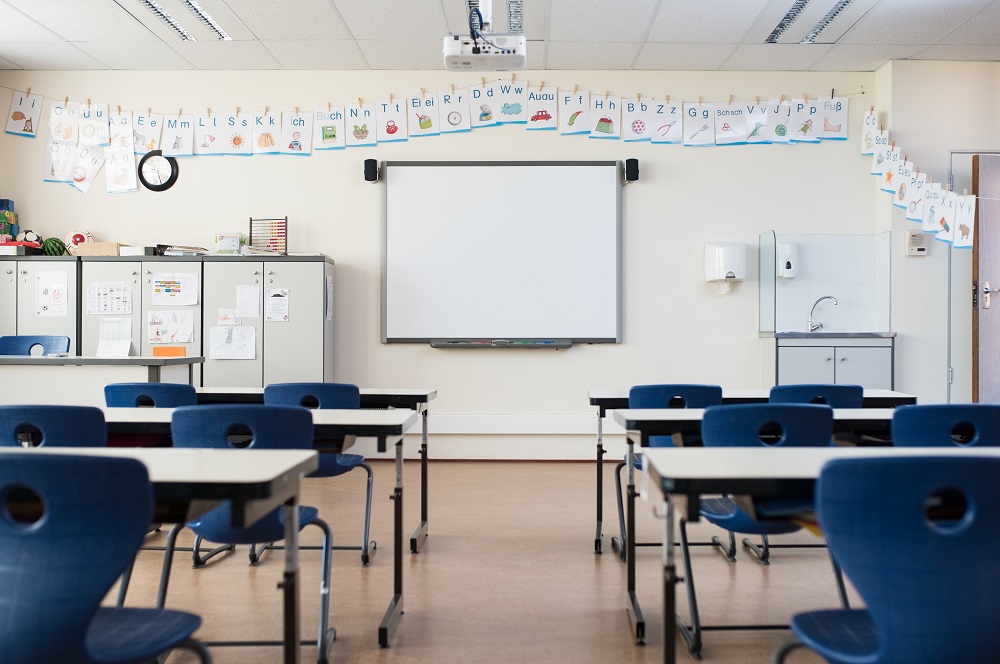
In recent years, a troubling trend has emerged within the educational landscape: the rise of “Dummy Admissions,” where students formally enrolled in schools are effectively abandoning the classroom in favour of coaching institutes. This phenomenon, particularly prevalent from the 11th standard onwards, sees students dropping out of school to prepare for competitive exams under the tutelage of coaching centres, which were originally intended to supplement, not supplant, school education.
The shift has been stark. Coaching, once a support system, has transformed into a parallel education industry, with some arguing it overshadows the broader developmental benefits of traditional schooling. This evolution poses a critical question: How can schools reclaim their role not just as preparatory grounds for board exams but as sanctuaries of holistic education that truly prepare students for life?
The Diminishing Role of Schools
The primary role of any educational institution is to foster an environment conducive to learning, curiosity, and personal growth. Schools are meant to be arenas where young minds receive a balanced education — academically, socially, and emotionally. However, the allure of scoring top marks in competitive exams has tilted the focus sharply towards rote learning and intensive exam preparation, often at the expense of holistic development.
The Coaching Conundrum
Coaching centres operate with a laser focus on results, primarily targeting competitive exams like the JEE, NEET, and others. This narrow approach prioritises immediate academic results over long-term learning and personal development. Students, driven by the pressure to excel in these high-stakes environments, often find themselves estranged from the broader educational experiences that school offers — experiences that are crucial in shaping well-rounded individuals capable of adapting to life’s varied challenges.
Reclaiming the Sanctuary of Education
For schools to regain their central place in the educational journey of students, they must evolve to meet the diverse needs of their students. Here are a few strategies that could help schools reassert their relevance:
- Integrated Curriculum: Schools could integrate aspects of competitive exam preparation into their regular curriculum, thus reducing the need for external coaching. This would allow students to prepare for exams without missing out on the broader educational offerings of the school.
- Focus on Skill Development: Beyond academic prowess, schools should enhance their focus on developing critical life skills such as critical thinking, problem-solving, creativity, and communication. These skills are crucial for success in professional and personal life and can make schooling more relevant.
- Counselling and Support Services: Enhanced counselling services can help students navigate their educational pathways and career choices effectively. Schools should equip students with the tools to make informed decisions about their futures.
- Experiential Learning: Schools must emphasise experiential and contextual learning, making education a more engaging, practical, and enjoyable experience. This can be achieved through project-based learning, internships, and real-world problem-solving scenarios.
- Parental Engagement: Engaging parents in the educational process and informing them about the importance of a balanced education can help shift the focus from mere exam preparation to overall development.
- Promotion of Arts and Sports: Encouraging participation in arts, sports, and other co-curricular activities can enrich students’ educational experience and support the development of a wide range of skills.
As the educational landscape continues to evolve, the challenge for schools is not just to prepare students for exams but to prepare them for life. In a world increasingly dominated by coaching centres, schools must innovate and broaden their educational offerings to ensure they remain valued not just as conduits to board results but as launchpads for the futures of students. It’s about striking a balance between academic rigor and holistic development, ensuring that schools remain the nurturing grounds for the leaders of tomorrow.
To read more on such trends that need to be called out and #un-trended, head to the April issue of our magazine here.
Education
Rebalancing the Scales: The Urgent Call for Humanities in STEM-Dominated Curricula
Published
3 weeks agoon
April 4, 2024
In today’s educational landscape, the scales are heavily tipped towards Science, Technology, Engineering, and Mathematics (STEM) fields, a trend that has sparked a crucial dialogue on the role of humanities in shaping well-rounded individuals. This discussion is not just academic; it reflects a deeper question about the kind of future we envision for our society and the individuals who will lead it.
Extra focus on STEM subjects is a broader issue: the sidelining of humanities in educational institutions, which reduces the vast expanse of human knowledge and creativity to mere footnotes. Students struggling to find value and meaning in a curriculum that doesn’t cater to their passion for history, literature, and the arts underscores a significant gap in our education system.
Recent studies highlight this imbalance. According to the National Foundation for Educational Research, students exposed to a balanced curriculum that includes humanities alongside STEM subjects exhibit a higher level of critical thinking, empathy, and adaptability. These skills are crucial not just for personal development but for navigating the complexities of today’s global society. Furthermore, a report by the American Academy of Arts and Sciences on the state of the humanities in higher education points out that students who engage in humanities courses are better prepared for leadership roles, showcasing the intrinsic value of these disciplines in cultivating informed and compassionate leaders.
Despite these findings, the preference for STEM subjects remains dominant, driven by the perception of better job prospects and economic benefits. This preference has led to a significant reduction in the availability and quality of humanities education in many schools. The scarcity of staff for humanities subjects and the absence of facilities like language labs not only hinder students from pursuing their interests but also limit the educational community’s ability to foster a diverse set of competencies among its students.
The consequences of this imbalance are far-reaching. By prioritising STEM at the expense of humanities, we risk nurturing a generation equipped with technical skills but lacking in the critical thinking, empathy, and cultural awareness that are equally vital in addressing the challenges of our increasingly interconnected world. This dichotomy raises a pressing question: are we merely training the next generation of technicians and engineers, or are we committed to nurturing well-rounded individuals who can contribute meaningfully to society?
The journey towards a more balanced educational approach begins with acknowledging the value of all disciplines. For students, and indeed for our future society, the richness of education lies not in the depth of knowledge in a single field, but in the breadth of understanding across the spectrum of human experience. As we stand at this crossroads, the choice is ours: will we continue down the path of narrow specialisation, or will we embrace the holistic education that our future leaders deserve?
Education
Palette of Possibilities: Nurturing Creativity in Schools through Modern Art
Published
3 weeks agoon
April 4, 2024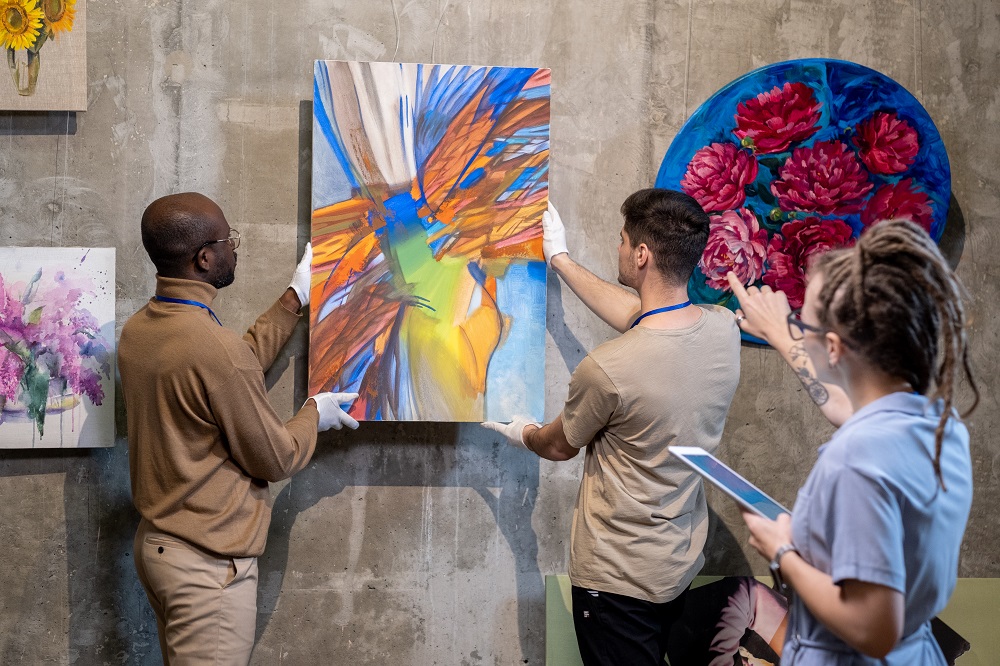
In the sphere of education in India, modern art often seems to be overlooked, relegated to the periphery of the academic spectrum. As a student who has traversed the diverse landscapes of Indian education, from traditional classrooms to the unique environment of boarding schools and experiential learning hubs, I find myself yearning for a more comprehensive exposure to the world of artistic expression, particularly modern art. The need for schools to step up, take responsibility, and actively involve students in art events is paramount, as it not only opens doors to diverse career possibilities but also cultivates a rich tapestry of creativity that can shape the coming generations.
As children, artistic expression often comes naturally. Young minds are unburdened by self-doubt or the constraints of societal expectations. Pablo Picasso quoted, “Every child is an artist. The problem is how to remain an artist once we grow up,” encapsulates a poignant reflection on the innate creative capacity inherent in every individual. Modern art is not just about canvases and paint; it is a dynamic force that ignites imagination, critical thinking, and a deeper understanding of the world. Yet, in the rigid framework of Indian education, the appreciation for modern art is often confined to the sidelines, overshadowed by the emphasis on conventional subjects like science and economics. But here’s the societal humor in this drama – we’re living in an era where a meme can garner more attention than a paragraph from a history book. The world craves creativity, and schools need to acknowledge that modern art is not just a rebellious teenager’s way of expressing angst; it’s the language of innovation and adaptability.
One of the primary reasons why schools need to prioritize modern art is its unparalleled ability to nurture creativity. In a world that is rapidly evolving, fostering creative thinking is essential. Modern art challenges students to think beyond the conventional, encouraging them to question, experiment, and envision new possibilities. By integrating modern art into the curriculum, schools provide a platform for students to express themselves in ways that transcend the boundaries of traditional subjects.
Expressive classes, extending beyond the conventional painting and sketching, open up avenues for students to convey their feelings using colors, drawings, and various artistic mediums. These sessions serve as a sanctuary where students can explore the depths of their emotions and thoughts, transcending the limitations of verbal communication. By tapping into the world of abstract expressionism, students are given the freedom to communicate through art, allowing for a richer and more nuanced understanding of their inner selves.
Art events play a pivotal role in this process. Unfortunately, such opportunities are often sparse in the Indian education landscape. Cultural wit lies in the fact that many students are oblivious to the plethora of careers awaiting them in the creative industries. Schools need to take the initiative to expose students to art exhibitions, workshops, and interactive sessions that showcase the diversity of modern artistic expressions. These events not only broaden students’ perspectives but also serve as catalysts for potential careers in the arts.
The inclusivity of modern art is another facet that makes it indispensable in schools. Unlike some traditional subjects that may seem exclusive or difficult for certain students to access, modern art is a platform where everyone can find a voice. It accommodates diverse perspectives, allowing students of varying abilities, backgrounds, and interests to engage meaningfully with the subject matter.
In the context of a globalized world, where cultural understanding and appreciation are crucial, modern art serves as a bridge between different societies and histories. It exposes students to a rich tapestry of global artistic expressions, helping them develop a sense of cultural empathy and an appreciation for diversity. By studying modern art, students gain insight into the shared human experience that transcends geographical and cultural boundaries.
To fully harness the potential of modern art in schools, it is essential for educational institutions to take proactive steps. This includes providing adequate resources for art programs, organizing art events, and encouraging collaborations with local artists and art communities. By fostering an environment where modern art is valued and celebrated, schools can empower students to explore their creativity and recognize the broader significance of artistic expression.
In addition to fostering a conducive learning environment, organizing art events within the school can prove instrumental. These events may showcase the brilliance of local art forms, such as Rajasthani art like Phad, Thapa and Sanjhi, Thangka from Arunachal Pradesh and Madhubani from Bihar. By incorporating these regional nuances into the school’s art curriculum, students gain exposure to diverse styles and cultural influences, enriching their understanding of the broader art landscape.



(Images- Phad, Thangka, and Madhubani art from India)
Moreover, numerous case studies show that exposure to art can sensitize individuals to social issues. One compelling example is the impact of community-based art projects in urban slums. The Dharavi Art Room, a non-profit organization, has initiated various art projects in the Dharavi slum in Mumbai. Through murals and community workshops, the project aims to empower residents, especially children, providing them with a creative outlet and a platform to express their stories. This case study may explore the impact of art on community dynamics, individual empowerment, and awareness of social issues within the slum. Through mural paintings and collaborative art initiatives, these projects have not only beautified the surroundings but have also brought attention to critical issues, fostering a sense of community and social responsibility.
The integration of modern art into the Indian education system is not just a matter of aesthetics but a strategic investment in nurturing well-rounded individuals. It’s time for schools across the country to recognize the transformative power of modern art and actively work towards exposing students to its myriad facets. By doing so, we not only open doors to diverse career opportunities but also cultivate a generation of individuals who approach life with creativity, curiosity, and a profound appreciation for the beauty that art brings to the world.
Authored by-
Parinya Santlani,
Student,
Paradise School, Goa
Education
Lessons Beyond a Cricket Pitch: An IPL-Inspired School Curriculum
Published
4 weeks agoon
March 27, 2024
“As we tune into the electrifying atmosphere of the Indian Premier League, where the clash of willow against leather sends pulses racing, we’re not just spectators of a thrilling spectacle. We’re witnesses to a living, breathing classroom where science dances with agility, leadership commands the play, and economics paints the bigger picture. Today, let’s embark on a journey beyond the boundary ropes, exploring how the IPL isn’t merely a cricket tournament but a dynamic, fun-filled educational odyssey.”
The Science Behind the Ball and Bat
At the heart of cricket lies a ballet of physics, each ball bowled a lesson in motion, energy, and force. The journey of a cricket ball, from the bowler’s hand to the bat, is a vivid demonstration of aerodynamics in action. Factors like air resistance, spin, and the Magnus effect collaborate to dictate the ball’s trajectory. A spinner’s delivery, curving through the air, isn’t just a challenge for the batsman but a practical example of physics. The materials of the game, especially the cricket bat made from willow, offer insights into material science, chosen for their capacity to absorb the shock of the ball’s impact and minimize damage to the hands.
The biomechanics of players, whether it’s a batsman executing a perfect cover drive or a bowler’s seam position at the point of delivery, are a testament to the human body’s potential when understood and harnessed through the principles of physics. Integrating these aspects into the curriculum can transform a standard physics lesson into a riveting session that connects students’ passion for cricket with the wonders of science.
Leadership on and off the Pitch
The IPL is a crucible of leadership, each match a case study in strategy, decision-making, and human management. Players like Virat Kohli and Rohit Sharma, with their tactical acumen and ability to inspire their teams, embody the essence of effective leadership. “Sports has taught me a lot. It helps reveal character. Sport teaches you about facing challenges, overcoming challenges on a regular basis which apply to every work of life.” Kohli once remarked, encapsulating the spirit of sportsmanship that transcends the cricket field. This philosophy can seamlessly be integrated into educational discussions, illustrating how leadership isn’t confined to high-pressure matches but is equally relevant in group projects, student councils, and beyond. MS Dhoni, a legendary cricketer and former Indian cricket team captain also believes that it is important to push every youngster to take up sports. “Be it, mentally or physically, sport teaches a lot to the students and that actually helps in practical life. Sports should play a big role in students’ life and everyone should be pushed to it,”
The Economy of Runs and Rupees
The IPL, a dazzling spectacle of cricket, is also a multi-billion-dollar industry that serves as a fascinating model for financial literacy and understanding the global economy of sports. The auction room, where players are bid on like prized artworks, offers a live demonstration of market dynamics and valuation. Sponsorships, media rights, and merchandising around the IPL introduce students to concepts of branding, revenue generation, and the economic impact of sports on national and global scales. It’s a practical lesson in economics, illustrating how supply and demand, investment, and financial management play out in one of the world’s most popular sports leagues.
IPL: A Classroom Without Walls
The IPL’s fusion of high-stakes cricket with lessons in physics, leadership, and economics presents an unparalleled opportunity to make learning interactive and engaging. It encourages students to see the relevance of their studies in real-world scenarios, thus igniting a passion for subjects that might previously have seemed abstract or disconnected from their interests.
Incorporating IPL-themed lessons into the curriculum can transform the traditional classroom, making learning a lively, participatory experience. As students analyse match strategies, calculate batting averages, or explore the economic model of the IPL, they’re not just learning; they’re engaging with the material in a way that’s both meaningful and enjoyable.
Cricket commentator and former cricketer Ian Bishop‘s words resonate deeply here: “The heart and soul of the game is what makes it so special.” In the context of education, the IPL embodies this spirit, proving that when you blend passion with learning, the classroom becomes a place of endless possibilities and discoveries.
The Indian Premier League offers more than just entertainment. It provides a vibrant, multifaceted platform for learning, encompassing physics, leadership, and economics, among other subjects. By viewing the IPL through an educational lens, we can inspire students to engage deeply with their studies, showing them that education, like cricket, can be filled with excitement, challenges, and lifelong lessons.
Knowledge
Empowering the next generation: How mentorship shapes the future of young women’s professions
Published
2 months agoon
March 8, 2024
Mentorship acts as a cornerstone in empowering women across diverse professional landscapes. Studies reveal a strong correlation between mentorship and positive career outcomes for women. Using studies and real-world examples, this article talks about how mentoring shapes women’s career prospects.
Bridging the Gender Gap: The Power of Role Models
According to a 2021 study by McKinsey & Company and Lean In, women who have mentors are more likely to advance in their careers than those who don’t. This emphasizes how important role models are. Through mentorship, mentees are encouraged to believe that “if they can do it, so can I” by seeing successful women in their area. They are thus motivated to go after big dreams and defy society norms that might have initially deterred them.
Breaking Down Barriers: Access to Networks and Resources
Mentorship transcends mere guidance; it unlocks valuable networks and resources. Mentors, often established professionals, can connect their mentees to crucial individuals and opportunities. A 2023 study by the Harvard Business Review found that women with mentors are more likely to be connected to senior leaders and receive critical career advice. These connections open doors to job opportunities, training programs, and industry knowledge, propelling women forward in their careers.
Building Confidence and Skill Development
Mentorship fosters professional development by providing constructive feedback and valuable insights. A research published in the Journal of Career Development also found that mentorship programs significantly increase women’s self-efficacy and confidence in their abilities. Through personalized guidance, mentors equip their mentees with the skills needed to excel in their chosen field. This tailored approach empowers women to navigate challenges, develop critical thinking skills, and become well-rounded professionals.
Real-World Examples: Paving the Way for Success
Mentoring has an impact that goes beyond statistics. Consider the narrative of Meta Platforms’ COO, Sheryl Sandberg. Susan Wojcicki, the former CEO of YouTube, became Sandberg’s mentor. Sandberg acknowledges Wojcicki’s crucial assistance and direction throughout her career. In similar way, former PepsiCo CEO Indra Nooyi has talked about the important influence her mentor Jack Welch had on developing her leadership style and helping her succeed. These illustrations demonstrate how mentoring can significantly alter the career paths of women in leadership roles.
Investing in the Future: A Collective Responsibility
Mentorship is not a one-sided endeavor. Moreover, It fosters a culture of learning and exchange, benefiting both mentors and mentees. Mentors gain valuable leadership experience, stay updated with industry trends through interactions with mentees, and contribute to building a more inclusive and diverse future within their organizations.
The future of various professions and the empowerment of women hinges on funding mentorship programs. While individuals can actively seek mentorship within their networks or through specialized channels, organizations can design structured programs that pair women with experienced mentors. Every effort, no matter how big or small, helps create a world in which women prosper and realize their full potential in all spheres of the workforce.
To conclude, mentoring serves as a spark for women’s professional empowerment. Through facilitating access to resources, networks, and positive role models as well as skill development, mentoring sets the stage for a day when women may successfully traverse a variety of professions and realize their full potential. Together, we can actively seek guidance and engage in mentorship programs to help establish a better future for women in the workforce.
Authored by:

Dr. Kalpana Gangaramani
Founder & Managing Director,
Target Publications Pvt. Ltd.
Education
National Safety Day: The Importance of Teaching Good Touch and Bad Touch in Schools
Published
2 months agoon
March 4, 2024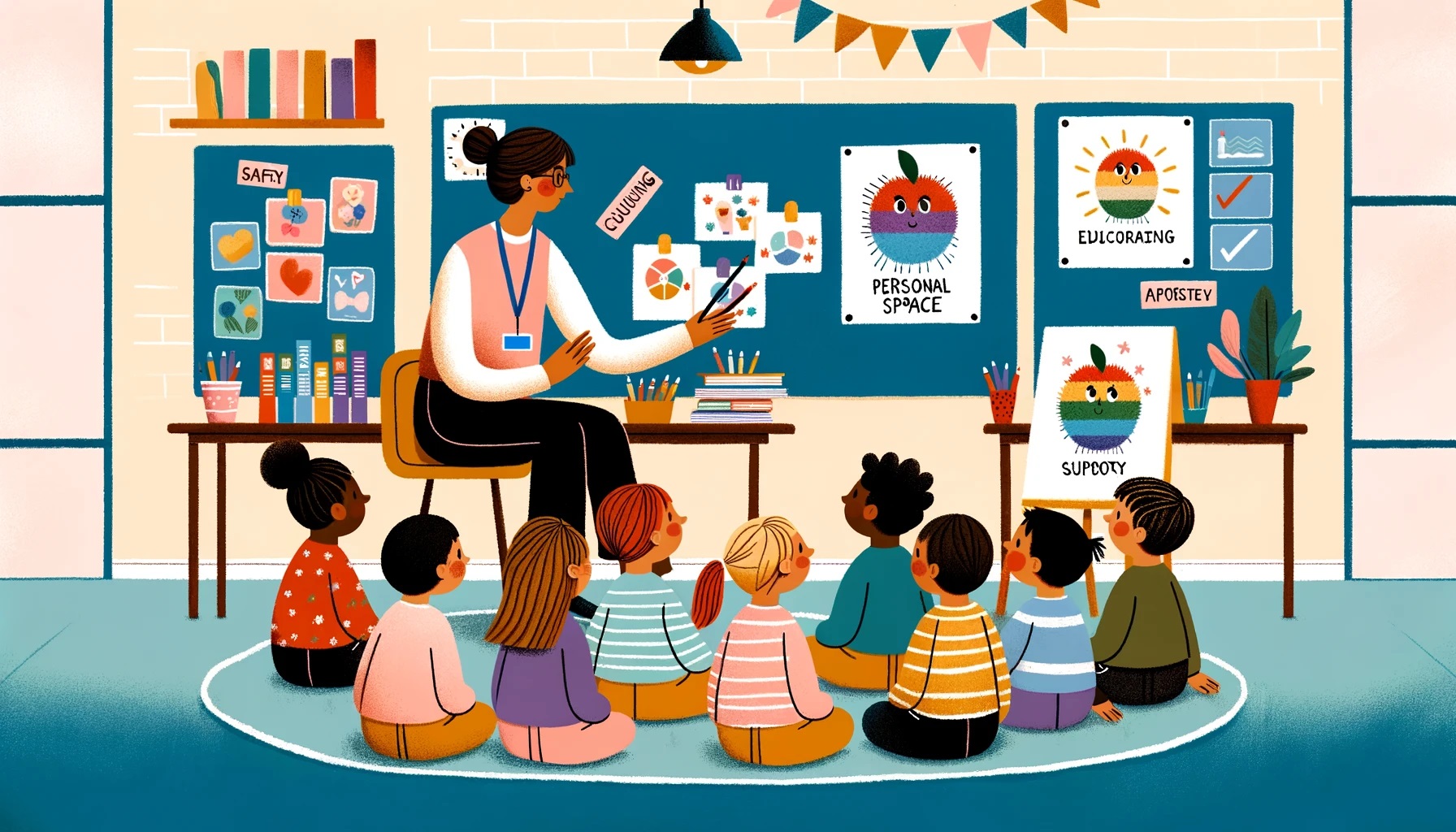
In the light of National Safety Day observed on the 4th of March each year, there’s a crucial aspect of safety that demands our attention—not just physical safety but the safety of our personal boundaries. This calls for an essential conversation about teaching children the concept of good touch and bad touch in schools, a topic that extends beyond the basics of traffic and environmental safety to the core of personal security and dignity.
Why, you might ask, is it vital to introduce this topic in the educational ecosystem? Simply put, knowledge is power. Educating children on the difference between a ‘good touch’ and a ‘bad touch’ empowers them to understand their rights, recognise inappropriate behaviour, and importantly, speak up. In an era where the safety of children should be paramount, this education acts as a shield, protecting their innocence and integrity.
But the conversation doesn’t stop with the children. It extends to the educators themselves. In the process of enlightening the young minds about safety, it’s equally critical for teachers to undergo training on the same subject. This dual approach serves a twofold purpose: a) it equips teachers to handle disclosures of inappropriate touch with sensitivity and the seriousness it demands, ensuring the right steps are taken to safeguard the child and b) it makes educators aware of their own actions, ensuring their interactions with students are always appropriate and beyond reproach.
The Protection of Children from Sexual Offences (POCSO) Act, implemented in India, underscores the importance of such education. The Act provides a legal framework to protect children against offences of sexual abuse, sexual harassment, and pornography while safeguarding the child at every stage of the judicial process. Incorporating awareness about the POCSO Act in school curriculums and teacher training programs reinforces the legal and moral responsibilities we hold towards our children.
Integrating this education into schools demands sensitivity, age-appropriate language, and a nurturing environment where children feel safe to express their concerns. It’s about building trust, ensuring every child knows they have a voice and that voice will be heard and respected.
For educators, this training should be an integral part of their professional development. Understanding the nuances of child psychology, the impact of their actions, and the legalities of child protection are essential components of their role. This knowledge not only protects the children but also the educators, fostering a safe and respectful learning environment.
Now, over to you, dear readers. Engaging in this dialogue is the first step towards change. Schools must be sanctuaries of learning, not just academically but socially and personally. As parents, educators, and members of the community, it’s our collective responsibility to advocate for and implement this crucial education. Share your thoughts, experiences, and suggestions. How can we, as a society, better protect our children? Your voice matters in shaping a safer future for our youngest citizens.
This conversation is not just necessary; it’s urgent. Let’s not shy away from it. Together, we can create a culture of safety, respect, and understanding, making every day a step towards a safer tomorrow for our children.
Newsletter

Marked by Marks: The Stereotyping of Student Potential

Ivy Pressure Unveiled- The Need to Look Beyond the Ivy Gates

Ooty Set to Host India’s Premier Liberal Arts Symposium: LASSI 2024

Scindia School Students Launch Start-Ups with White Canvas India’s Young CEO Program

Unsupervised Explorations: Rethinking Student Trips

Mapping Green Careers: Guiding Students Towards Sustainable Job Opportunities

Pricey Presents, Precocious Pressures: The Cost of Gift-Giving to Children

Addressing the Transition From Classrooms to Coaching: The Shifted Focus

Questioning the Trend of Lavish Farewells- #FarewellFiasco

Young Birders’ Workshop Opens Registration for Children Aged 10-13 Years

STEMpedia Successfully Completed Codeavour 5.0- India’s National Innovation Fest

Reviving School Education: Countering the Coaching Centre Dominance
CBSE to Initiate Pilot for National Credit System in Grades 6, 9, and 11

The Role of Marketing in Education: Navigating the New Educational Landscape

From Overwhelmed to Empowered: Strengthening Educator Skills for Success

NCERT Introduces Bridge Month Programme for Class 6 Amid Textbook Transition

Indian Embassy Advocates for India-US Collaboration in Education Sector

Nurturing Healthy Behaviors: The Role of Schools in Shaping Health-Conscious Citizens

CBSE Updates Exam Structure for 11th & 12th Class; Concept-based Questions Now 50% of Weightage

Sharing the spotlight: When parent and child take board exams together

Rebalancing the Scales: The Urgent Call for Humanities in STEM-Dominated Curricula

Palette of Possibilities: Nurturing Creativity in Schools through Modern Art

Empowering Minds: The Journey of My Guide Inside with Christa Campsall

The Potential of an Entrepreneurial Development Programme for Primary School Students

FPSB India and IIM Bangalore Forge Strategic Partnership to Advance Financial Education

Life of My Father: Dr. Jagdish Gandhi, a Pioneer in Education

Mayo College Announces New Leadership

Post-pandemic: Embracing Well-being in India’s Schools with My Guide Inside

Empowering the Future: The Success of Beti Bachao Beti Padhao in Girls’ Education

Is Students’ Data in Safe Hands in a Digital World?

Central Government Sets New Framework for Coaching Centres

FPSB India and IIM Bangalore Forge Strategic Partnership to Advance Financial Education

Radio Broadcasting in Schools: Creating a Platform for Student Voices

Kerala Introduces ‘Water-Bell’ Initiative in Schools to Boost Hydration

India to recognise Farsi as a classical language under New Education Policy

Farewell to a Pioneer: Dr. Jagdish Gandhi’s Enduring Legacy in Education

Anticipating a Progressive Leap: The Education Sector’s Hopes for Union Budget 2024

Lexicon Schools Spark Innovation with STEAM Fest

The Need to Preserve Newspapers for Bias-Free Education

A Voice for All Ages: The Enduring Legacy of Ameen Sayani in Indian Education

Seth M. R. Jaipuria School launches CBSE School in Bhiwadi, Rajasthan

From 2025-26, Indian Students to Get Two Opportunities to Sit for Board Exams

The Rising Leaders’ Summit 2024: A Timeless Learning for Future Educational Leaders

International Women’s Day 2024: Are We Not Special?

ISRO Launches Young Scientist Programme 2024 for Budding Space Enthusiasts

Teach for India Invites Applications for its 2024 Fellowship Program

Ministry of Women and Child Development Unveils National Curriculum Framework for Early Childhood Care and Education

World Theatre Day: Let Theatre Arts Make Classroom’s Showtime Spectacular!

India Sets 6-Year Minimum Age for Class 1 Admissions Nationwide

CBSE considering Open Book Exams for classes 9-12, to do a pilot run in November
SGEF2023 | Special Address by Rama Datt, Trustee, Maharaja Sawai Man Singh II Trust, Jaipur

ScooNews | After Movie | ScooNews Global Educators Fest 2023

Aftermovie | NIES2 UP Chapter | 21 Jan 2023

WEBINAR | Gamification in Education: How Digital Badges Can Boost Student Motivation and Engagement

ScooNews | WEBINAR| Importance of Physical Activity for Children at School | Plaeto

SCOONEWS | WEBINAR | WHY DIGITIZING YOUR SCHOOL IS A MUST | TEACHMINT

Keynote Address | Lakshyaraj Singh Mewar

Anurag Tripathi, Secretary, CBSE at SGEF2022

How schools can nurture every student’s genius

Aftermovie | SGEF2022 | Jaipur

Li Andersson | Minister of Education | Finland

Anurag Tripathi, Secretary, Central Board of Secondary Education (CBSE) discusses NEP2020

ScooNews | Early Ed Asia 2019 | Aftermovie
#PodarECEconf : Pursuing quality ECE

#CBSE Class XII #Results #Highlights

The interesting story of India’s educational system | Adhitya Iyer

A young scientist’s quest for clean water

The Danger of Silence: Clint Smith

National Digital Library of India is an initiative by HRD Ministry

Remembering Kalpana Chawla on her birthday!

Message from Sadhguru for Students!
Message from Sadhguru for Students!

The Untapped Genius That Could Change Science for the Better

Eddy Zhong: How school makes kids less intelligent TEDxYouth@Beacon

#TEDxCanberra : What if every child had access to music education…
Trending
-
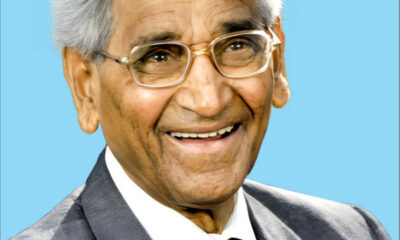
 Inspiration1 month ago
Inspiration1 month agoLife of My Father: Dr. Jagdish Gandhi, a Pioneer in Education
-
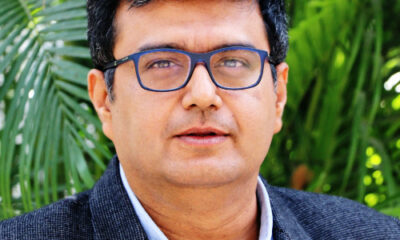
 Education3 months ago
Education3 months agoMayo College Announces New Leadership
-

 Education1 month ago
Education1 month agoPost-pandemic: Embracing Well-being in India’s Schools with My Guide Inside
-
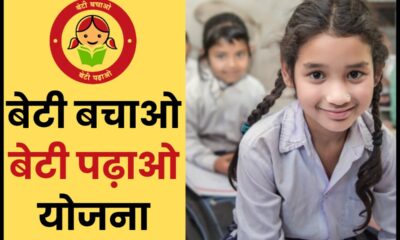
 Education3 months ago
Education3 months agoEmpowering the Future: The Success of Beti Bachao Beti Padhao in Girls’ Education
-

 Knowledge3 months ago
Knowledge3 months agoIs Students’ Data in Safe Hands in a Digital World?
-

 Education3 months ago
Education3 months agoCentral Government Sets New Framework for Coaching Centres
-
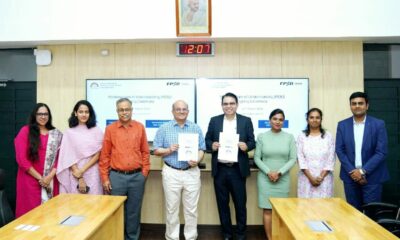
 Education4 weeks ago
Education4 weeks agoFPSB India and IIM Bangalore Forge Strategic Partnership to Advance Financial Education
-

 Education2 months ago
Education2 months agoRadio Broadcasting in Schools: Creating a Platform for Student Voices
-

 Education2 months ago
Education2 months agoKerala Introduces ‘Water-Bell’ Initiative in Schools to Boost Hydration
-
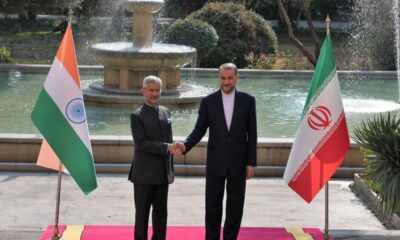
 Education3 months ago
Education3 months agoIndia to recognise Farsi as a classical language under New Education Policy


